Cecilia Damon
Rule-Mining based classification: a benchmark study
Jun 30, 2017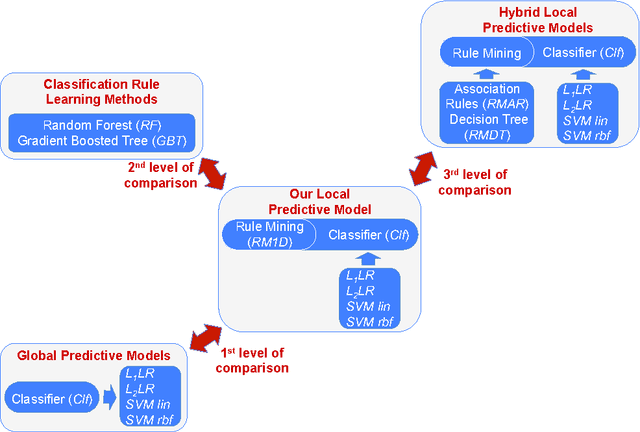

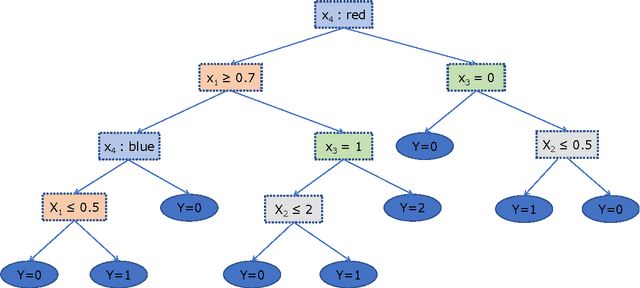
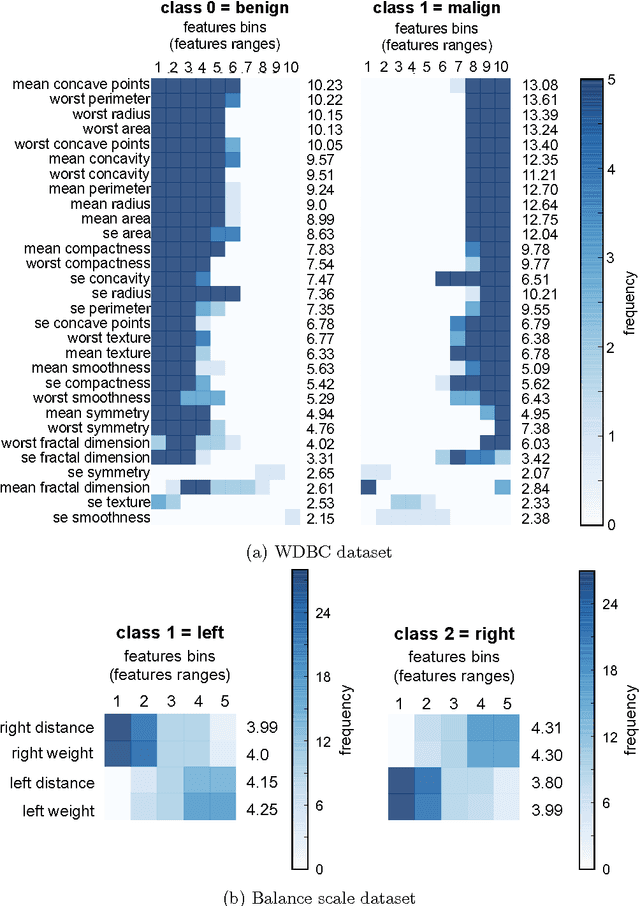
Abstract:This study proposed an exhaustive stable/reproducible rule-mining algorithm combined to a classifier to generate both accurate and interpretable models. Our method first extracts rules (i.e., a conjunction of conditions about the values of a small number of input features) with our exhaustive rule-mining algorithm, then constructs a new feature space based on the most relevant rules called "local features" and finally, builds a local predictive model by training a standard classifier on the new local feature space. This local feature space is easy interpretable by providing a human-understandable explanation under the explicit form of rules. Furthermore, our local predictive approach is as powerful as global classical ones like logistic regression (LR), support vector machine (SVM) and rules based methods like random forest (RF) and gradient boosted tree (GBT).
L1 logistic regression as a feature selection step for training stable classification trees for the prediction of severity criteria in imported malaria
Nov 20, 2015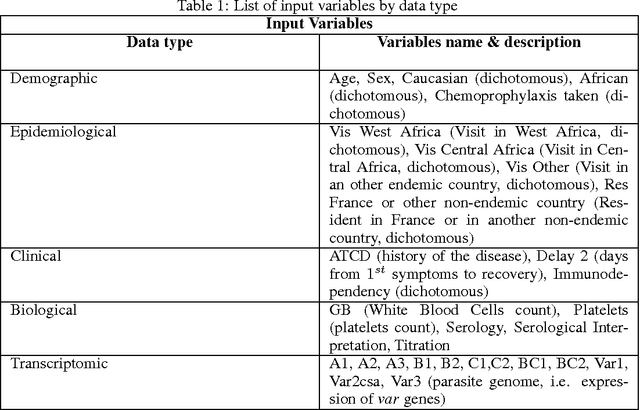
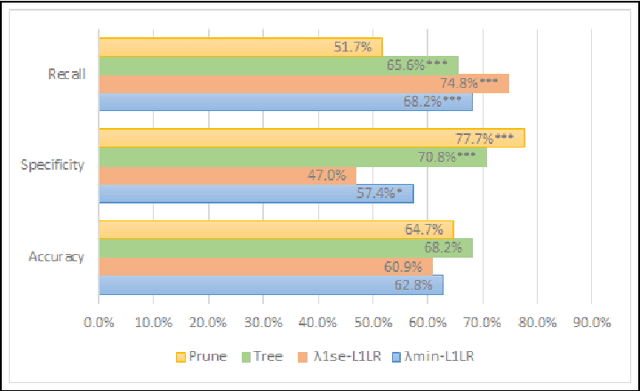
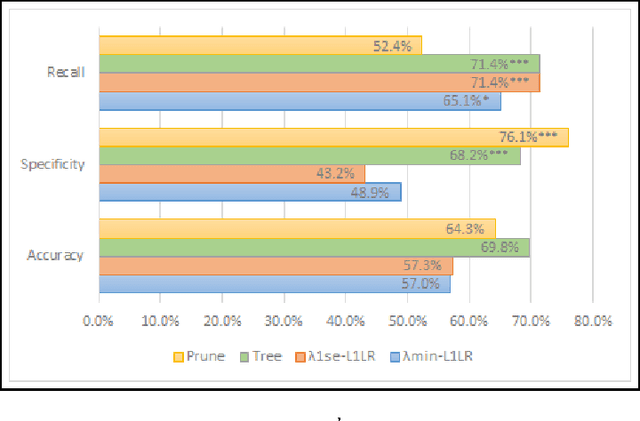
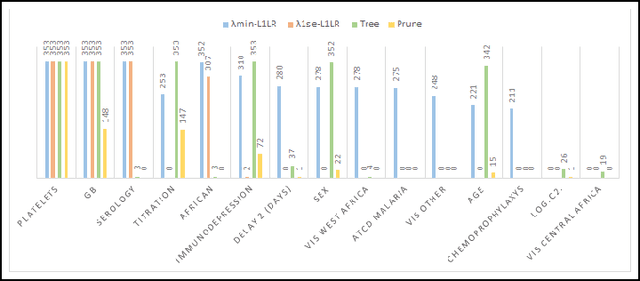
Abstract:Multivariate classification methods using explanatory and predictive models are necessary for characterizing subgroups of patients according to their risk profiles. Popular methods include logistic regression and classification trees with performances that vary according to the nature and the characteristics of the dataset. In the context of imported malaria, we aimed at classifying severity criteria based on a heterogeneous patient population. We investigated these approaches by implementing two different strategies: L1 logistic regression (L1LR) that models a single global solution and classification trees that model multiple local solutions corresponding to discriminant subregions of the feature space. For each strategy, we built a standard model, and a sparser version of it. As an alternative to pruning, we explore a promising approach that first constrains the tree model with an L1LR-based feature selection, an approach we called L1LR-Tree. The objective is to decrease its vulnerability to small data variations by removing variables corresponding to unstable local phenomena. Our study is twofold: i) from a methodological perspective comparing the performances and the stability of the three previous methods, i.e L1LR, classification trees and L1LR-Tree, for the classification of severe forms of imported malaria, and ii) from an applied perspective improving the actual classification of severe forms of imported malaria by identifying more personalized profiles predictive of several clinical criteria based on variables dismissed for the clinical definition of the disease. The main methodological results show that the combined method L1LR-Tree builds sparse and stable models that significantly predicts the different severity criteria and outperforms all the other methods in terms of accuracy.
 Add to Chrome
Add to Chrome Add to Firefox
Add to Firefox Add to Edge
Add to Edge